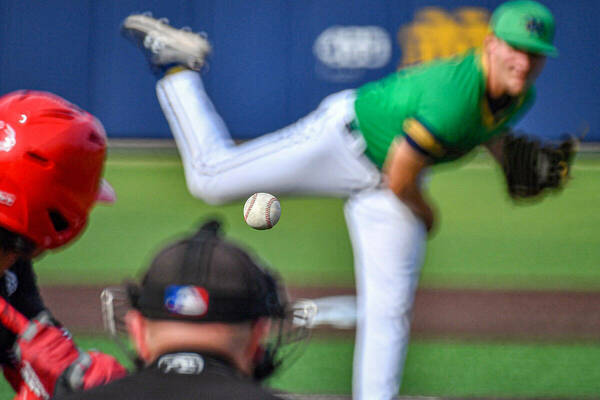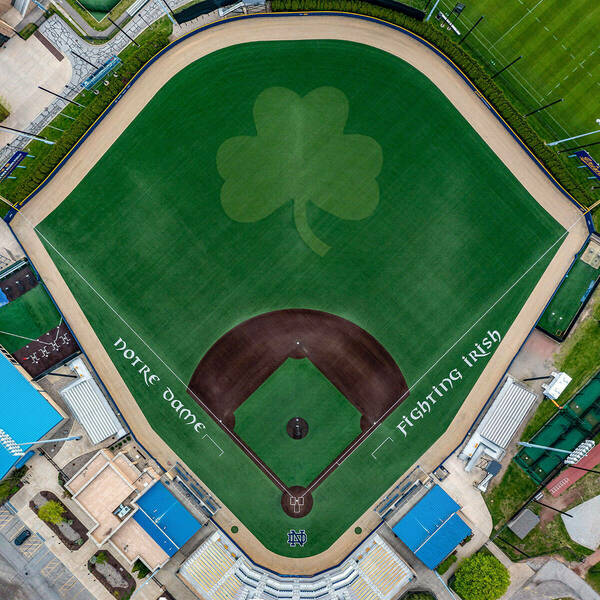Carl Yastrzemski — who would go on to play 23 seasons for the Boston Red Sox and become a first ballot Hall of Famer — briefly attended Notre Dame in the late 1950s on a scholarship to play baseball and basketball. Expectations for this son of a New York potato farmer were high. At Bridgehampton High on Long Island, Yastrzemski had hit over .500, thrown a no-hitter during his senior year and broken future NFL Hall of Famer Jim Brown’s career high school basketball scoring record.
As a freshman at Notre Dame in 1957-58, Yaz wasn’t eligible to play on either varsity squad, but he did have a standout season as an infielder on the freshman baseball team. He studied business and lived in Morrissey Hall — its in-house food sales service is still named in his honor: Yaz’s. But stardom for Yastrzemski at Notre Dame wasn’t meant to be. When he went home for Thanksgiving in 1958, Yastrzemski couldn’t resist the Boston club’s offer of a $108,000 signing bonus along with a commitment to pay for the rest of his education. He left South Bend after completing the fall semester and returned to attend some classes in the off-season, eventually completing his degree at Merrimack College in 1966.

In 1967, Yastrzesmki won the American League Triple Crown for leading all players in batting average, home runs and runs batted in and was named the league’s most valuable player. A mainstay in the Red Sox outfield through 1983, he is probably the most famous among the 95 Notre Dame baseball players who since 1875 have gone on to play in the major leagues, but he is arguably not the biggest. That title likely belongs to fellow Hall of Famer Adrian “Cap” Anson. The first player to reach 3,000 hits, Anson is widely considered the most dominant baseball figure of the 19th century. After two years of studies at Notre Dame (1865-67), Anson played a record 27 seasons at first base, most with the Chicago White Stockings (who became the Colts and later, long after Anson’s day, the Cubs). He also managed the Chicago team and, for one season, the New York Giants, introducing the use of signals on the field and the rotation of pitchers.
Anson’s reputation has not aged well, given his racial prejudice. Several times he refused to take the field with Black players, and he was an outspoken advocate for segregation, ultimately influencing owners to ban the signing of Black players in 1887, a policy that lasted 60 years.
Anson’s managerial career ended not long before Ed Reulbach, a righthanded pitcher from Detroit, enrolled at Notre Dame in 1901. As a sophomore, Reulbach broke the school’s single-season record for strikeouts. He went on to pitch 13 seasons in the majors, nine of them with the Chicago Cubs, posting a 182-106 career win-loss record and a 2.28 career ERA before his retirement in 1917. Reulbach’s claim to everlasting baseball fame came on September 26, 1908, when the Cubs were scheduled to play a doubleheader against the Brooklyn Superbas (later the Dodgers). After shutting out the Brooklyn nine in the first game, Reulbach petitioned his manager to pitch the second game. The manager consented, and Reulbach blanked Brooklyn again, the only time in major league history a single pitcher has thrown a double shutout.
Another righthander, Brad Lidge, showed up at Notre Dame in the ’90s (the fall of 1995, to be exact) able to throw in the 90s — his fastball clocked at 91 miles per hour in high school. By his junior year, he was throwing 97 mph, and the Houston Astros drafted him in the first round as the 17th overall pick of the 1998 amateur draft, so he turned pro. Lidge developed a nasty slider to go with his fastball, which eventually topped 100 mph. After Lidge’s first and only major league start, Astros catcher Brad Ausmus told him, “Your changeup is kind of garbage. You should be in the bullpen. I think you have the ability, with that fastball and slider, to be a pretty dang-good end-of-the-game type guy.”
So it was that Lidge wound up in the bullpen for 11 seasons with three teams, a two-time All-Star who recorded 225 career saves. His most memorable save came in the final game of the 2008 World Series with the Philadelphia Phillies. Called upon to protect a one-run lead over the Tampa Bay Rays in the bottom of the ninth, Lidge gave up a broken-bat single but struck out the final batter with a slider low and away. He leaped in the air, then fell to his knees, his arms reaching to the heavens — an indelible image of victory.
Another alumnus had a share of the glory in a final World Series game a decade earlier: Craig Counsell ’92, who had been the Fighting Irish MVP during his senior year. In 1997, as the Florida Marlins’ second baseman, Counsell drove in the tying run with a sacrifice fly in the ninth inning of Game Seven of the World Series and scored the winning run in the 11th.

Counsell played 16 years in the majors for five teams, retiring in 2011 after five seasons with the Milwaukee Brewers. Four years later, he was back with the Brewers as their manager. Through nine seasons he went 707-625, setting a record for most wins by a Brewers manager and leading the team to the playoffs five times. After Milwaukee declined to renew Counsell’s contract last November, the Cubs hired him to a five-year deal worth more than $40 million, making him the highest-paid manager in MLB history.
Coincidentally, Counsell’s former coach at Notre Dame, Pat Murphy, will replace Counsell in Milwaukee. And Notre Dame’s perennial presence on big-league ballfields will continue among players as well. Trey Mancini ’14, Joe Boyle, A.J. Pollock, Peter Solomon and Matt Vierling ’21 — who all played in the majors last season — may be back to represent the Irish in 2024.
John Rosengren lives and writes in Minneapolis. His 10 books include a biography of Hall of Fame first baseman Hank Greenberg and The Greatest Summer in Baseball History: How the ’73 Season Changed Us Forever. Read more at johnrosengren.net.